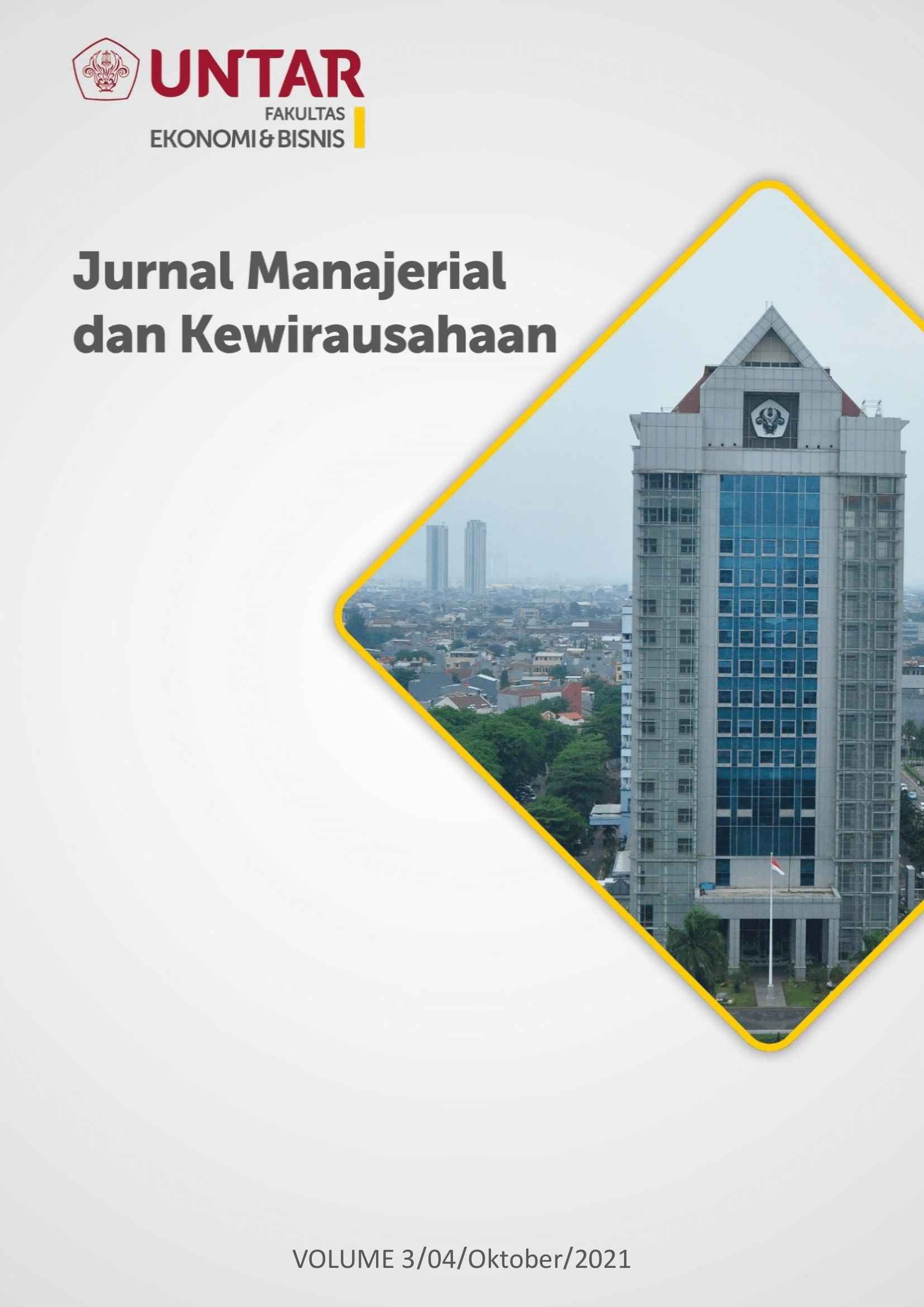Pengaruh Penggunaan Sosial Media Dan E-Wom Terhadap Keputusan Pembelian Di Mediasi Kepercayaan
Main Article Content
Abstract
The purpose of this study is to test the effect of social media usage and e-wom on purchase decision and then trust as a mediation between social media usage and e-wom to purchase decision. The data were collectected by using online questionnaires through social media in the form of Whatsapp, Line and Instagram. The number of samples used in this study were 100 respondent consumer air Jordan in Jabodetabek. The method used in this study is convenience sampling and alayzed using smartPLS-SEM. The result of this study state that the variables of social media usage and E-WOM have a significant influence on trust, social media usage, E-WOM, and trust have a significant influence on purchase decision.
Tujuan dari penelitian ini adalah untuk menguji pengaruh penggunaan sosial media dan e-wom terhadap keputusan pembelian serta menguji kepercayaan sebagai mediasi antara penggunaan sosial media dan e-wom dengan keputusan pembelian. Pengambilan data yang dilakukan dengan cara kuesioner yang disebarkan melalui sosial media seperti Whatsapp, Line dan Instagram. Populasi dari penelitian ini adalah 100 pelanggan konsumen sepatu Air Jordan di Jabodetabek. Metode yang digunakan adalah convenience sampling untuk menyebarkan kuesioner secara online yang kemudian diolah menggunakan smartPLS-SEM. Hasil dari penelitian ini adalah penggunaan sosial media dan E-WOM dapat mempengaruhi kepercayaan. Kemudian penggunaan sosial media, E-WOM, dan kepercayaan dapat mempengaruhi keputusan pembelian.
Article Details
This work is licensed under a Jurnal Muara Ilmu Ekonomi dan Bisnis Creative Commons Attribution-ShareAlike 4.0 International License.,/p>
References
Aritonang, L. R. (2007). Riset Pemasaran: Teori & Praktik. Bogor: Penerbit Ghalia Indonesia.
Badan Pusat Statistik. (2021). Pertumbuhan Ekonomi Produk Domestik Bruto. Jakarta: BPS.
Boyd, D. M., & Ellison, N. B. (2007). Social network sites: Definition, history, and scholarship. Journal of computer?mediated Communication, 13(1), 210-230.
Chin, W. (2000). Partial least squares for IS researchers: an overview and presentation of recent advances using the PLS approach. ICIS, 741-742.
Creswell, J. W. (2012). Fourth Edition Educational Research Planning, Conducting, and Evaluating, Quantitative Research. Boston: Pearson Education.
Godes, D., & Mayzlin, D. (2004). Using online conversations to study word-of-mouth communication. Marketing science, 23(4), 545-560.
Handi, H., Hendratono, T., Purwanto, E., & Ihalauw, J. J. (2018). The effect of e-WOM and perceived value on the purchase decision of foods by using the go-food application as mediated by trust. Quality Innovation Prosperity, 22(2), 112-127.
Haryanto, A. T. (23 Februari 2021). Pengguna Internet Indonesia Tembus 202,6 Juta. Dikutip dari https://inet.detik.com/cyberlife/d-5407210/pengguna-internet-indonesiatembus-2026-juta
Hennig-Thurau, T., Gwinner, K. P., Walsh, G., & Gremler, D. D. (2004). Electronic word-of-mouth via consumer-opinion platforms: what motivates consumers to articulate themselves on the internet? Journal of interactive marketing, 18(1), 38-52.
Kotler, P., & Armstrong, G. (2012). Principles of Marketing. New York: Pearson Education.
Kotler, P., & Keller, K. L. (2012). Marketing Management fourteenth edition, England: Pearson Education.
Munir, J., Shafi, K., Khan, F. A., & Ahmed, U. S. (2018). Elucidating the relationship of social media usage and e-WOM with brand related purchase decision involvement: an integrated meta-framework approach. WALIA journal, 34(1), 59-64.
Omoregie, O.K., Addae, J.A., Coffie, S., Ampong, G.O. A., & Ofori, K.S. (2019). Factors influencing consumer loyalty: Evidence from the Ghanaian retail banking industry. International Journal of Bank Marketing, 37(3), 798-820. https://doi.org/10.1108/IJBM-04-2018-0099
Prasad, S., Gupta, I. C., & Totala, N. K. (2017). Social media usage, electronic word of mouth and purchase-decision involvement. Asia-Pacific Journal of Business Administration, 9(2), 1-30
Rotter, J. B. (1967). A new scale for the measurement of interpersonal trust. Journal of Personality, 35(4), 651-665.
Sarwono, J., & Budiono, H. (2012). Statisik Terapan: Aplikasi Untuk Riset Skripsi, Tesis, dan Disertasi (Menggunakan SPSS, AMOS, dan Excel). Jakarta: PT Elex Media Komputindo, Gramedia.
Sarwono, J., & Narimawati, U. (2015). Membuat Skripsi, Tesis, dan Disertai dengan Partial Least Square SEM (PLS-SEM). Andi: Yogyakarta.
Truong, N. X. (2018). The impact of hallyu 4.0 and social media on Korean products purchase decision of generation C in Vietnam. The Journal of Asian Finance, Economics, and Business, 5(3), 81-93.
Vongurai, R., Elango, D., Phothikitti, K., & Dhanasomboon, U. (2018). Social media usage, electronic word of mouth and trust influence purchase-decision involvement in using traveling services. Asia Pacific Journal of Multidisciplinary Research, 6(4), 32-37.



